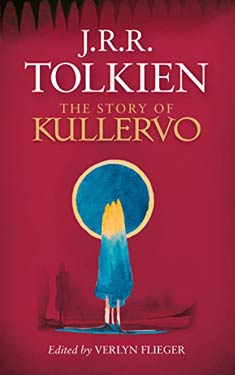JRR Tolkien
Completed 1/17/2019,
Reviewed 1/17/2019
3 stars
This is
Tolkien’s first short story. It is an
adaptation of a story from the Finnish “Kalevala”, a collection of early Finnish
epic stories. It is also an inspiration
for his character Turin Turambar from The Silmarillion and The Children ofHurin. This book contains the short
story, two similar essays by Tolkien on the Kalevala, and commentary and a
paper by Professor Verlyn Flieger from U of Maryland. The short story itself is a rather tough
read. Being his first story, probably
from around 1912, he uses archaic words and sentence form. Fortunately, Professor Flieger’s paper, which
compares the Kullervo with Turin, recounts the story and helps make sense of
it.
Kullervo is
a boy, the second generation offspring of a swan. While still in the womb of his mother, his
father is killed and the family enslaved.
Growing up, he learns of the treachery against his father and grows in
resentment and anger. His name means “wrath”. He has a twin sister and a magical dog. The dog gives him talismans which save
Kullervo from several attempts on his life.
He continues to grow in resentment, becoming cocky, and learning magic
from his dog. Evil never leaves Kullervo
and his life takes a tragic turn in the end.
As I
mentioned above, the story is difficult to understand. I got the gist of it, but was thankful for
the review in Flieger’s analysis.
Tolkien uses different names for the characters which confuses things
more. Being a short story, there isn’t
much character development, except for Kullervo. He grows in anger and orneriness throughout
the story. It reads like a fairy tale,
which of course it is based on. So there’s
a lot of action. This is definitely an
extremely early work, with only little of the Tolkien prose which is more
evident in the Silmarillion.
However, it
is a jumping off point for the story of Turin.
Flieger breaks down the story of Kullervo and compares and contrasts it
with the story of Turin, as well as the original tale in the Kalevala. As primitive as Tolkien’s Kullervo seems, he
clearly had big ideas when adapting it into his own work from the
Kalevala. And this germ of a story then
blossomed into the very emotionally and psychologically complex Turin.
I give this
book three stars out of five. It is
interesting reading for the diehard Tolkien fan. However, it would probably be lost on the
casual reader. The real intent of the
book is Flieger’s paper, and to illuminate us on the origins of a major
character in Tolkien’s imaginarium. The
additional two lectures by Tolkien that are included are very similar, one
actually having been presented, the other being just about a page and a half
short of its conclusion. They are
interesting, and reading two versions of it drives home some ideas. But again, these are probably only
appreciated by the diehard reader. I
wouldn’t recommend this book unless you liked the works recently published by
Christopher Tolkien and some of the translation and critical essays by JRRT, like
“Beowulf” and The Fall of Arthur.

No comments:
Post a Comment